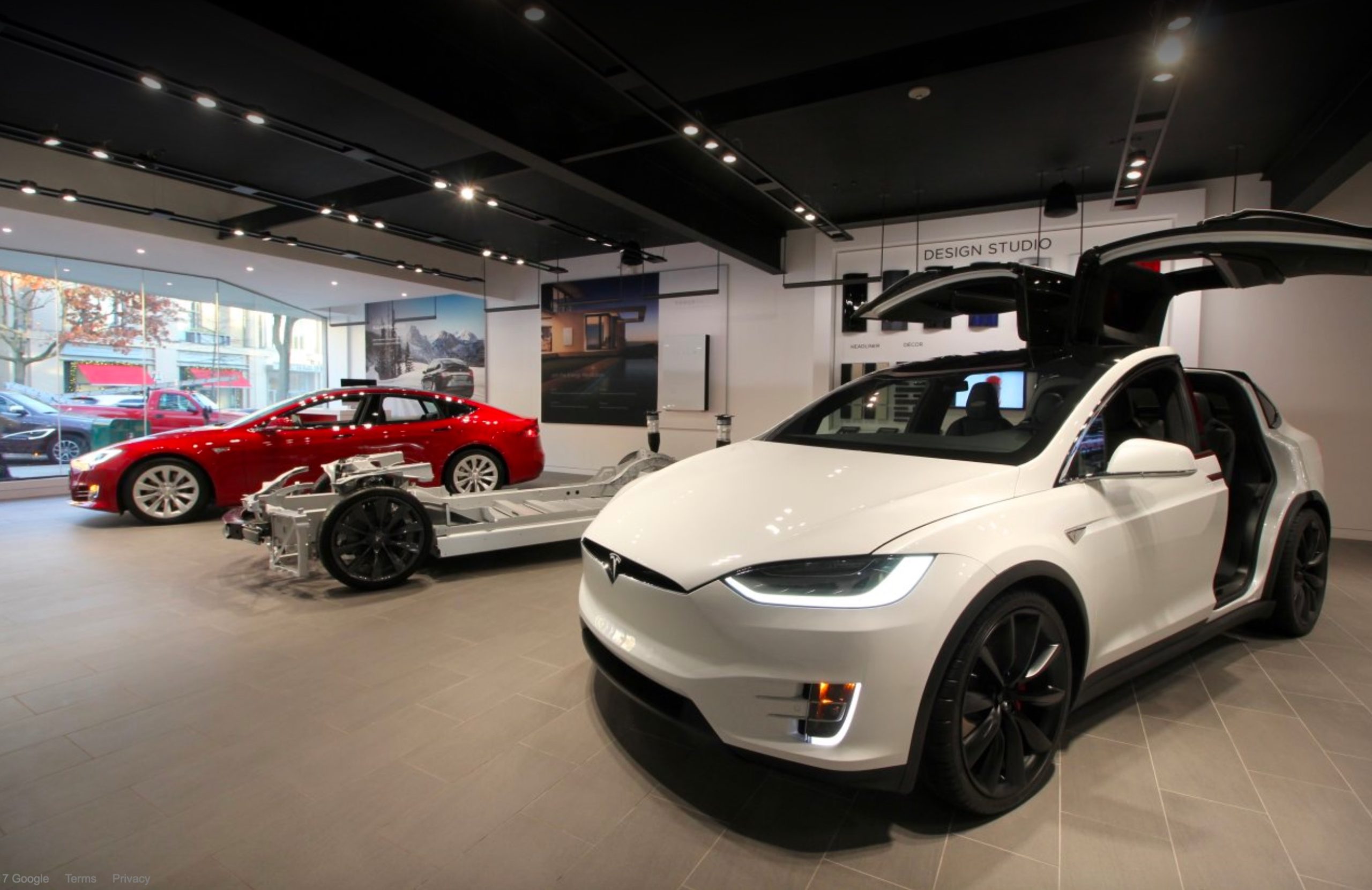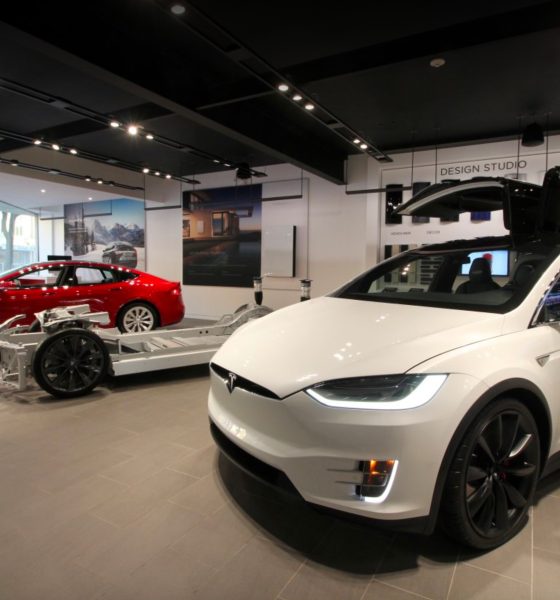

News
Tesla blocked (again) in Connecticut after judge rules in-state activities illegal
Connecticut state court judge Joseph M. Shortall disagreed with Tesla’s “educational venue” defense of a vehicle display gallery in Greenwich, concluding in a December 6, 2018 ruling that its business activities are illegal under state law. The gallery, opened in October 2016, was ordered in May 2017 to “cease all functions” by Connecticut’s Department of Motor Vehicles (DMV), claiming it was operating its 340 Greenwich Ave. location like a dealership, an activity requiring a license for which Tesla is not eligible. Tesla subsequently filed a lawsuit primarily arguing the definition of sales-oriented terms; however, the Superior Court of the New Britain Judicial District affirmed the DMV’s ruling, beginning a period wherein Tesla may file an appeal.
Connecticut state law forbids direct vehicle sales by vehicle manufacturers in favor of a “franchise system”, a set of laws meant to protect independent car dealerships from predatory practices of larger car manufacturing companies. Elon Musk, Tesla’s CEO, has made it a company policy not to sell their electric vehicles to independent dealerships primarily because he believes franchises face a “fundamental conflict of interest” when selling both gas and electric vehicles. Also, Tesla would miss an important opportunity to educate potential buyers about its products in a traditional dealership setting.
“Existing franchise dealers have a fundamental conflict of interest between selling gasoline cars, which constitute the vast majority of their business, and selling the new technology of electric cars. It is impossible for them to explain the advantages of going electric without simultaneously undermining their traditional business. This would leave the electric car without a fair opportunity to make its case to an unfamiliar public.” – Elon Musk, October 22, 2012
It was the “educational” angle that the company took while operating their Greenwich location, claiming that prospective buyers were merely being given information about their unique technology along with a test drive opportunity. Any sales which followed were conducted online and delivery was out-of-state. The DMV, and later the Superior Court judge, disagreed, citing related activities conducted by the Greenwich team that were more sales-specific, such as commissions and bonuses tied to sales resulting from discussions at the gallery and the ability of Tesla to reclaim vehicles if they weren’t picked up by the customer within one week of delivery.
In the Superior Court’s ruling, decided by Judge Trial Referee Joseph M. Shortall, the term “selling” was also agreed to be all-inclusive of advertising and merchandising activities, a definition promoted by the Connecticut Automotive Retailers Trade Association (CARA). The association has been on the front-line of debates involving franchise systems, arguing that they ensure fair competition while demanding that Tesla comply with existing laws and license to independent dealerships as has been the tradition for decades. CARA was the party responsible for initiating the complaint about Tesla’s activities in the state, prompting the DMV’s investigation and order.
With regard to the recent ruling, a Tesla spokesperson tells Teslarati, “Tesla disagrees with the judge’s decision, and we stand by our mission to educate the public and raise awareness about the benefits of EVs because getting more EVs on the road is the right thing to do for the environment and for the battle against climate change.” Although the issue driving CARA’s objection surrounds the issue of “sales”, Tesla does not sell any vehicles at their Greenwich location.
Since Tesla does not license their vehicle sales to independent dealers, the company position is that its business should not be subject to the same laws as manufacturers with licensed franchises. As seen by this latest court ruling, Tesla’s position isn’t exactly a shared one. To date, the company has not been successful in convincing Connecticut’s legislature to revise the direct-sales laws and with organizations like CARA lobbying against such changes, the battle certainly seems uphill.
Connecticut state legislation to amend the direct-sales ban has been proposed twice before, both times stalling from lack of votes. Despite the potential for increased sales tax revenue and jobs from a distribution facility that would come from a Tesla presence in the state, CARA and the state legislators that are friendly to its positions are on the winning side of the matter, even if its tactics to paint a negative picture of the company are questionable. According to Tesla’s former vice president of business development, Diarmuid O’Connell, in a letter to state legislators, CARA previously sent secret shoppers into the Greenwich gallery to sway Tesla employees into illegally selling a vehicle from the storefront. The attempt, of course, failed.

Elon Musk
Elon Musk’s X will start using a Tesla-like software update strategy
The initiative seems designed to accelerate updates to the social media platform, while maintaining maximum transparency.

Elon Musk’s social media platform X will adopt a Tesla-esque approach to software updates for its algorithm.
The initiative seems designed to accelerate updates to the social media platform, while maintaining maximum transparency.
X’s updates to its updates
As per Musk in a post on X, the social media company will be making a new algorithm to determine what organic and advertising posts are recommended to users. These updates would then be repeated every four weeks.
“We will make the new 𝕏 algorithm, including all code used to determine what organic and advertising posts are recommended to users, open source in 7 days. This will be repeated every 4 weeks, with comprehensive developer notes, to help you understand what changed,” Musk wrote in his post.
The initiative somewhat mirrors Tesla’s over-the-air update model, where vehicle software is regularly refined and pushed to users with detailed release notes. This should allow users to better understand the details of X’s every update and foster a healthy feedback loop for the social media platform.
xAI and X
X, formerly Twitter, has been acquired by Elon Musk’s artificial intelligence startup, xAI last year. Since then, xAI has seen a rapid rise in valuation. Following the company’s the company’s upsized $20 billion Series E funding round, estimates now suggest that xAI is worth tens about $230 to $235 billion. That’s several times larger than Tesla when Elon Musk received his controversial 2018 CEO Performance Award.
As per xAI, the Series E funding round attracted a diverse group of investors, including Valor Equity Partners, Stepstone Group, Fidelity Management & Research Company, Qatar Investment Authority, MGX, and Baron Capital Group, among others. Strategic partners NVIDIA and Cisco Investments also continued support for building the world’s largest GPU clusters.
News
Tesla FSD Supervised wins MotorTrend’s Best Driver Assistance Award
The decision marks a notable reversal for the publication from prior years, with judges citing major real-world improvements that pushed Tesla’s latest FSD software ahead of every competing ADAS system.

Tesla’s Full Self-Driving (Supervised) system has been named the best driver-assistance technology on the market, earning top honors at the 2026 MotorTrend Best Tech Awards.
The decision marks a notable reversal for the publication from prior years, with judges citing major real-world improvements that pushed Tesla’s latest FSD software ahead of every competing ADAS system. And it wasn’t even close.
MotorTrend reverses course
MotorTrend awarded Tesla FSD (Supervised) its 2026 Best Tech Driver Assistance title after extensive testing of the latest v14 software. The publication acknowledged that it had previously criticized earlier versions of FSD for erratic behavior and near-miss incidents, ultimately favoring rivals such as GM’s Super Cruise in earlier evaluations.
According to MotorTrend, the newest iteration of FSD resolved many of those shortcomings. Testers said v14 showed far smoother behavior in complex urban scenarios, including unprotected left turns, traffic circles, emergency vehicles, and dense city streets. While the system still requires constant driver supervision, judges concluded that no other advanced driver-assistance system currently matches its breadth of capability.
Unlike rival systems that rely on combinations of cameras, radar, lidar, and mapped highways, Tesla’s FSD operates using a camera-only approach and is capable of driving on city streets, rural roads, and freeways. MotorTrend stated that pure utility, the ability to handle nearly all road types, ultimately separated FSD from competitors like Ford BlueCruise, GM Super Cruise, and BMW’s Highway Assistant.
High cost and high capability
MotorTrend also addressed FSD’s pricing, which remains significantly higher than rival systems. Tesla currently charges $8,000 for a one-time purchase or $99 per month for a subscription, compared with far lower upfront and subscription costs from other automakers. The publication noted that the premium is justified given FSD’s unmatched scope and continuous software evolution.
Safety remained a central focus of the evaluation. While testers reported collision-free operation over thousands of miles, they noted ongoing concerns around FSD’s configurable driving modes, including options that allow aggressive driving and speeds beyond posted limits. MotorTrend emphasized that, like all Level 2 systems, FSD still depends on a fully attentive human driver at all times.
Despite those caveats, the publication concluded that Tesla’s rapid software progress fundamentally reshaped the competitive landscape. For drivers seeking the most capable hands-on driver-assistance system available today, MotorTrend concluded Tesla FSD (Supervised) now stands alone at the top.
News
Elon Musk’s Grokipedia surges to 5.6M articles, almost 79% of English Wikipedia
The explosive growth marks a major milestone for the AI-powered online encyclopedia, which was launched by Elon Musk’s xAI just months ago.

Elon Musk’s Grokipedia has grown to an impressive 5,615,201 articles as of today, closing in on 79% of the English Wikipedia’s current total of 7,119,376 articles.
The explosive growth marks a major milestone for the AI-powered online encyclopedia, which was launched by Elon Musk’s xAI just months ago. Needless to say, it would only be a matter of time before Grokipedia exceeds English Wikipedia in sheer volume.
Grokipedia’s rapid growth
xAI’s vision for Grokipedia emphasizes neutrality, while Grok’s reasoning capabilities allow for fast drafting and fact-checking. When Elon Musk announced the initiative in late September 2025, he noted that Grokipedia would be an improvement to Wikipedia because it would be designed to avoid bias.
At the time, Musk noted that Grokipedia “is a necessary step towards the xAI goal of understanding the Universe.”
Grokipedia was launched in late October, and while xAI was careful to list it only as Version 0.1 at the time, the online encyclopedia immediately earned praise. Wikipedia co-founder Larry Sanger highlighted the project’s innovative approach, noting how it leverages AI to fill knowledge gaps and enable rapid updates. Netizens also observed how Grokipedia tends to present articles in a more objective manner compared to Wikipedia, which is edited by humans.
Elon Musk’s ambitious plans
With 5,615,201 total articles, Grokipedia has now grown to almost 79% of English Wikipedia’s article base. This is incredibly quick, though Grokipedia remains text-only for now. xAI, for its part, has now updated the online encyclopedia’s iteration to v0.2.
Elon Musk has shared bold ideas for Grokipedia, including sending a record of the entire knowledge base to space as part of xAI’s mission to preserve and expand human understanding. At some point, Musk stated that Grokipedia will be renamed to Encyclopedia Galactica, and it will be sent to the cosmos.
“When Grokipedia is good enough (long way to go), we will change the name to Encyclopedia Galactica. It will be an open source distillation of all knowledge, including audio, images and video. Join xAI to help build the sci-fi version of the Library of Alexandria!” Musk wrote, adding in a later post that “Copies will be etched in stone and sent to the Moon, Mars and beyond. This time, it will not be lost.”








